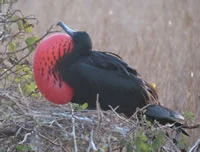Once again the Green Mountain Audubon Society conducted the annual Christmas Bird Count in the Burlington circle. This year represented the 65th annual count in Burlington. Sixty-four participants scoured 13 sectors within the circle in this day-long extravaganza under the capable leadership of GMAS Board member Shirley Johnson. Enthusiasm was high, the weather was fine, and the camaraderie was palpable. Here are some of the highlights.
A total of 17,991 birds were counted representing 69 species, not far from our record species count of 73 set in 2005. Records were set for Red-bellied Woodpecker (12), Tufted Titmouse (155), Northern Cardinal (269), Carolina Wren (14), Downy Woodpecker (106), Barred Owl (7), and Red-breasted Merganser (54). Look at this list. Red-bellied Woodpecker, Tufted Titmouse, Northern Cardinal, and Carolina Wren are all "southern" species that have expanded their range northward in recent years. Interestingly, the first Northern Cardinal in the Burlington area CBC was reported in 1958, the first Tufted Titmouse in 1968 (and then not again until 1977), the first Carolina Wren in 1974, and the first Red-bellied woodpecker in 1999. There is a message about climate change in this data.
At the other end of the spectrum irruptive species from the north-Pine Grosbeak, Common Redpoll, Pine Siskin, and Bohemian Waxwing-were well-represented in the count. In particular, Pine Grosbeaks (193) were seen in 10/13 sectors after not being counted at all in our circle since 2007. This photograph of a Pine Grosbeak was taken at Technology Park in South Burlington. Likewise, Common Redpolls (633) were numerous with nomadic flocks encountered in 10/13 sectors as they foraged voraciously on weed seeds and birch catkins.
The first Burlington area CBC occurred in 1948. That year four participants recorded 18 species and 1297 individual birds. How our Circle has grown since that time!
The day ended with the usual potluck dinner hosted by the Johnsons. Jim Osborn led the always-entertaining round up of bird counts from each sector. Truly this was the highlight of the GMAS birding year.










